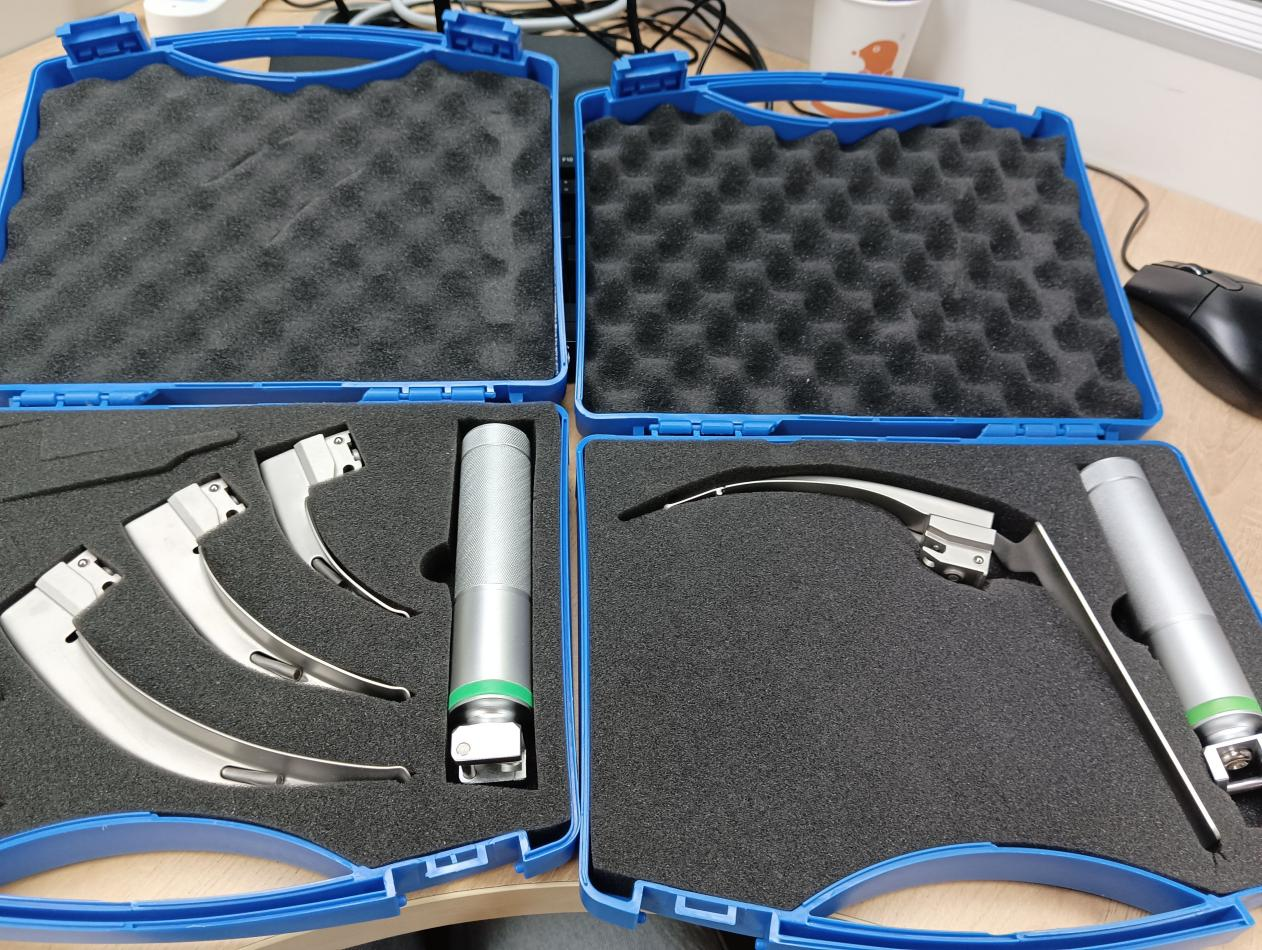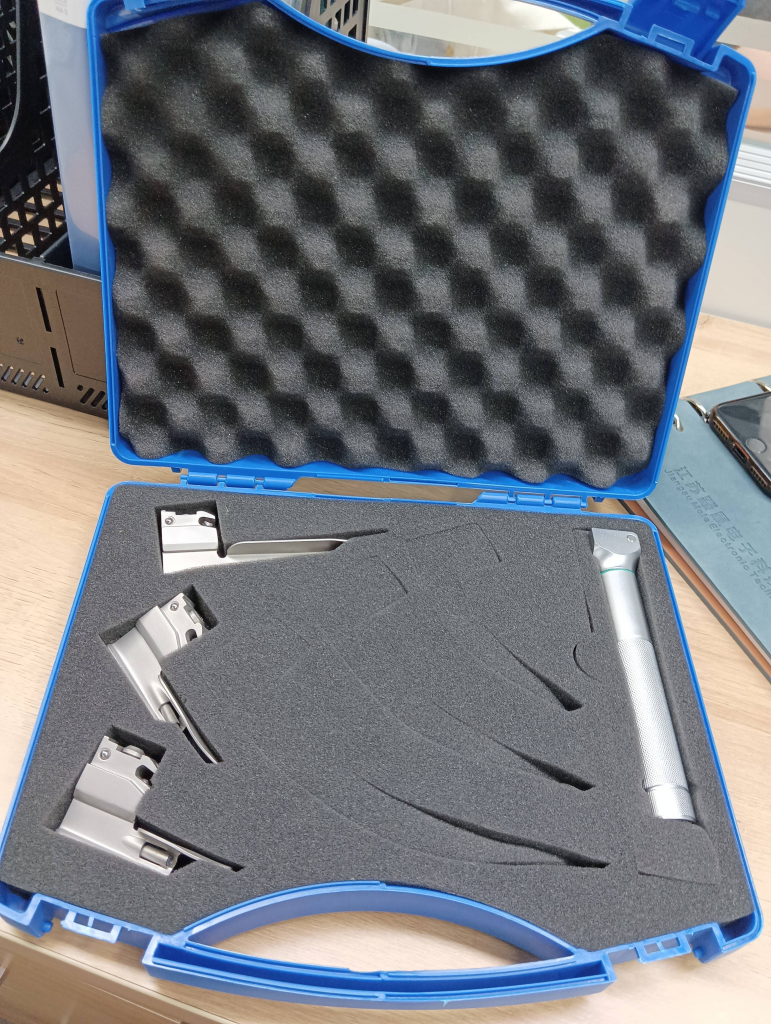Exploring Different Types of Laryngoscope Blades
Dec 23, 2023
When it comes to medical procedures, the right tools make all the difference. Intubation procedures are no exception, and laryngoscope blades are essential devices to achieve successful results. With a broad range of laryngoscope blade options, it can be overwhelming for medical professionals to choose the right one for the job.
In this section, we will delve into the different types of laryngoscope blades available. We will explore the unique features, applications, and a wide range of options that cater to different needs. From Macintosh blades to Miller blades, Wis-Hipple blades, D-BLADE, and GlideScope blades, we will provide a comprehensive overview of the variety of laryngoscope blade types that can help medical professionals make an informed selection.
Key Takeaways
- Different types of laryngoscope blades cater to various intubation needs
- The variety of laryngoscope blades includes Macintosh, Miller, Wis-Hipple, D-BLADE, and GlideScope blades
- Understanding the features and applications of each blade is crucial for successful intubation procedures
Macintosh Blades
Macintosh blades are a popular choice for medical professionals in laryngoscopy procedures. The blades feature a curved design that helps with easy intubation and improved visualization of the vocal cords. Macintosh blades are ideal for routine intubations and can be found in different sizes to suit different patient anatomies.
The curved design of Macintosh blades makes them easy to maneuver in the throat, providing the flexibility needed to navigate the airway. The blade’s tip is rounded, ensuring that it does not irritate or damage the patient’s airway tissues. Macintosh blades come in various materials, including stainless steel, plastic, and fiber-optic.
Macintosh blades are a versatile and reliable tool for any medical professional performing laryngoscopy procedures. Their ease of use and flexibility make them popular in various medical settings, from emergency medicine to intensive care units and beyond.
Miller Blades
Miller blades, also known as straight blades, are commonly used in pediatric patients or patients with limited mouth opening. These blades have a straight design without any curvature, providing excellent lifting of the epiglottis for better airway visualization during intubation.
While Miller blades are not suitable for routine intubation, they are particularly useful in cases where a curved blade would obstruct the view of the airway. Their straight design allows for precise control during intubation, making them ideal for patients with challenging intubation parameters.
Medical professionals can select from a range of Miller blade sizes to meet the needs of specific anatomies. It is important to select the right laryngoscope blade to reduce the risk of complications and ensure successful intubation.
Wis-Hipple Blades

If you encounter patients with challenging anatomical situations, Wis-Hipple blades may be of assistance in difficult intubations. These specialty blades offer a modified Macintosh design, with a wider flange at the distal end to provide better lifting and exposure of the vocal cords.
When selecting laryngoscope blade options, understanding the unique features and benefits of each blade type is crucial for medical professionals. Wis-Hipple Blades are an excellent laryngoscope blade variety to have in your medical arsenal.
D-BLADE
The D-BLADE is a revolutionary laryngoscope blade that merges the benefits of the Macintosh and Miller blades. This blade features a curved blade tip with a built-in Miller-like straight blade. This unique design allows for easier insertion and a better view of the vocal cords during intubation procedures.
The D-BLADE is a versatile option suitable for a broad range of patients and different intubation scenarios. The incorporation of the Miller-like straight blade assists in lifting the epiglottis, while the curved blade ensures smooth navigation through anatomical curves. This combination allows for better visualization, enhancing the accuracy and success rate of intubations.
The D-BLADE is an excellent addition to a variety of laryngoscope blade types available in the medical field. When considering laryngoscope blade options, the D-BLADE provides a unique solution, highly effective and user-friendly.
GlideScope Blades
GlideScope blades are a type of laryngoscope blade that use video technology to provide a clear digital view of the airway during intubation procedures. The blade has a small camera at the tip, which transmits a high-definition image to a screen, allowing medical professionals to visualize the vocal cords and surrounding structures with greater clarity.
These specialized blades are particularly advantageous when traditional direct laryngoscopy might be challenging or when a clear view of the airway is essential in difficult airway management. GlideScope blades provide medical professionals with an alternative option to better handle emergency procedures that require immediate intubation.
GlideScope blades are ideal for patients with mouth or airway abnormalities or who have narrowed or obstructed airways. With the introduction of digital visualization, GlideScope blades provide a safe and efficient way to minimize the risks associated with difficult intubation processes.
If you’re considering laryngoscope options, GlideScope blades may offer the added benefit of enhanced visualization during intubation procedures, which can help minimize risks and improve the chances of successful intubations.
Conclusion
As different types of laryngoscope blades, it is essential to have a thorough understanding of laryngoscope blades and their unique features. With a range of options available, including Macintosh blades, Miller blades, Wis-Hipple blades, D-BLADE, and GlideScope blades, it is crucial to choose the right tool for each intubation procedure.
While Macintosh blades are ideal for routine intubations, Miller blades are suitable for patients with limited mouth opening. Wis-Hipple blades are specialty blades that support difficult intubations, while the D-BLADE offers versatility in different intubation scenarios. GlideScope blades, on the other hand, are specialized video laryngoscope blades that offer enhanced visualization of the vocal cords.
Choosing the right laryngoscope blade is crucial for successful intubation procedures, and understanding the unique features and applications of each blade type is imperative. With the variety of laryngoscope blade options available, medical professionals can select the most suitable tool for their patients.
Categories
Latest Articles

Disposable Nephroscopes: Redefining Safety & Efficiency in Urology
Introduction The shift towards minimally invasive urological surgery has found a pivotal ally: the disposable nephroscope. As traditional reusable scopes grapple with persistent biofilm contamination risks and soaring sterilization costs, the global medical community is rapidly adopting single-use solutions. This article analyzes the clinical value, technological evolution, and dynamic innovation landscape driving this transformative shift. ... Read more

Disposable Video Laryngoscope Blades: The Ultimate Solution for Preventing Cross-Contamination
In the operating room, as the cold light of a video laryngoscope illuminates a patient’s airway, an age-old medical challenge is being redefined: How can life-saving instruments avoid becoming vectors of infection? Jiangsu MoleMedical drives an innovative safety revolution—replacing reusable devices with single-use, sterile laryngoscope blades that create a pure barrier for critical airways. Traditional video ... Read more
-2.jpg)
FDA & CE Approved Video Laryngoscope: What Makes It Stand Out?
Introduction In high-pressure emergencies and precision-driven operating rooms, video laryngoscopy is revolutionizing airway management. Mole Medical’s FDA and CE-certified technology replaces tactile-dependent “blind intubation” with real-time visual navigation – enhancing safety, accuracy, and clinical outcomes worldwide. Why Certification Matters Mole Medical’s dual certifications validate its global compliance and performance: FDA Clearance: Rigorous validation of safety/efficacy ... Read more

Mole Medical Showcases Advanced Endoscopy Solutions at CMEF Autumn 2025, Driving Global Partnerships
Guangzhou, China – September 26-29, 2025 – The 92nd China International Medical Equipment Fair (CMEF Autumn) concluded successfully on September 29th at the Canton Fair Complex in Guangzhou. Mole Medical Technology Co., Ltd. (Mole Medical) made a significant impact at the event, drawing global medical professionals and partners to its booth (Hall 2.1, Stand Q24) ... Read more

How to Use Disposable Ureteroscopes Safely and Efficiently
In the field of urology, the application of disposable electronic ureteral-kidney pelvis endoscopy catheters is leading the technological innovation in minimally invasive surgeries. According to the 2024 multi-center research data from China’s urology department, among the over 5,000 surgeries included, the patient group using disposable catheters performed significantly better in key indicators such as operation ... Read more



